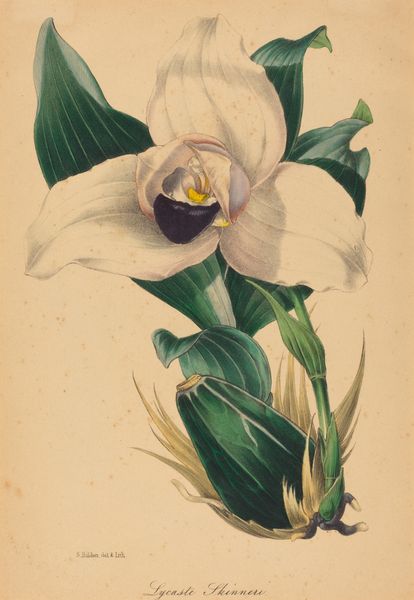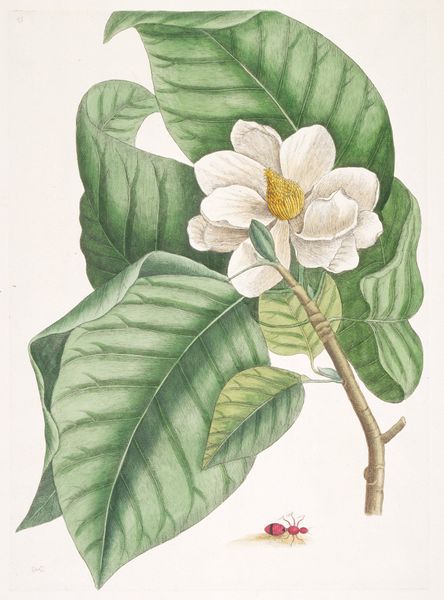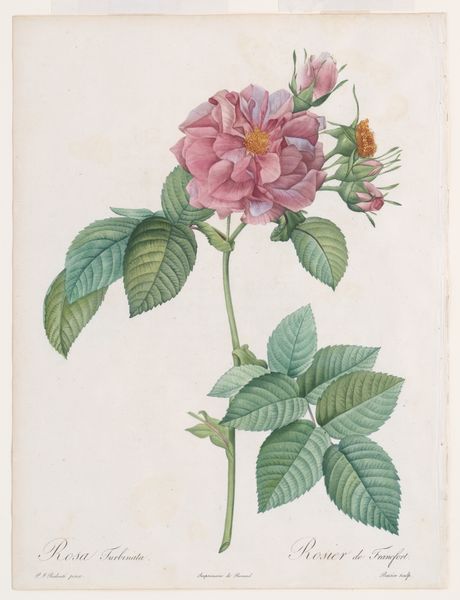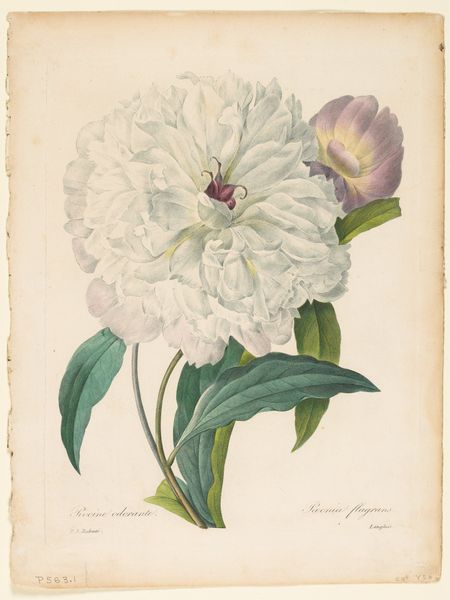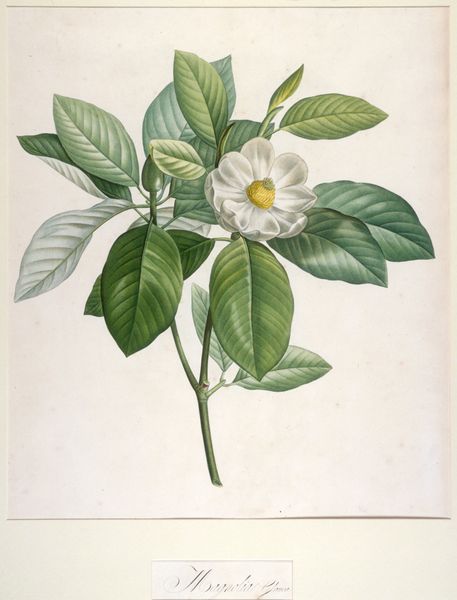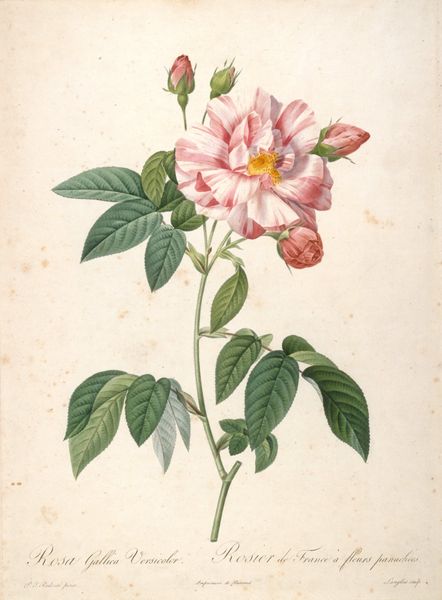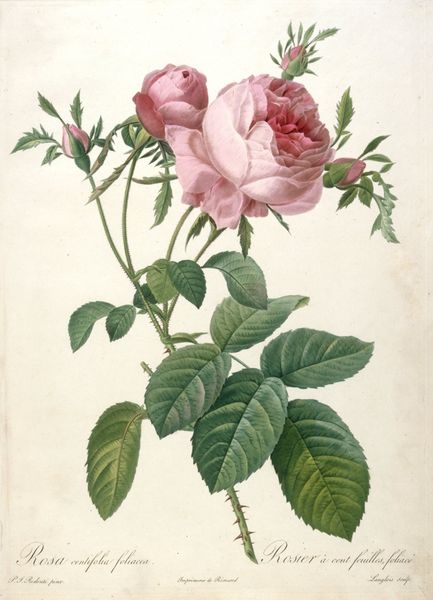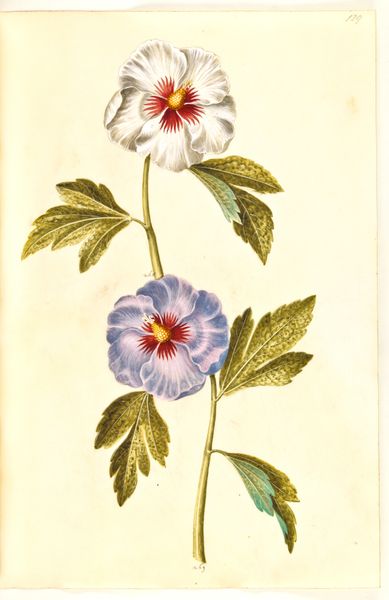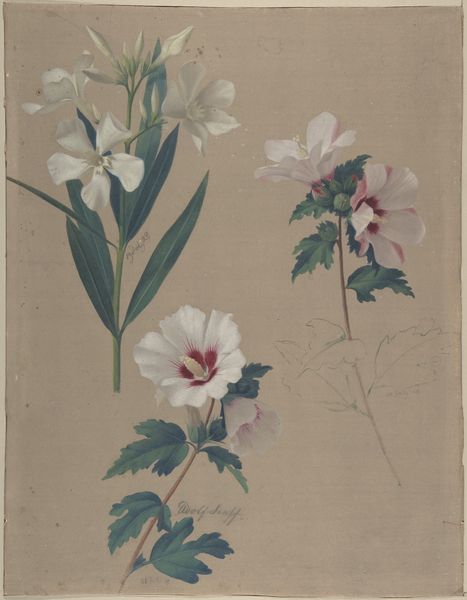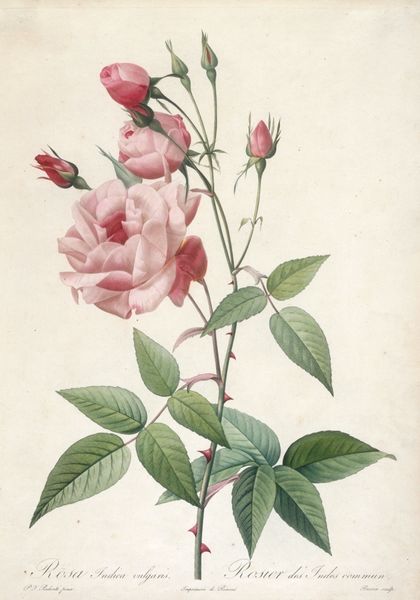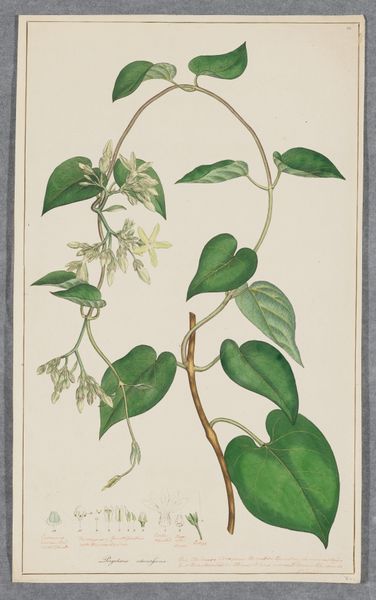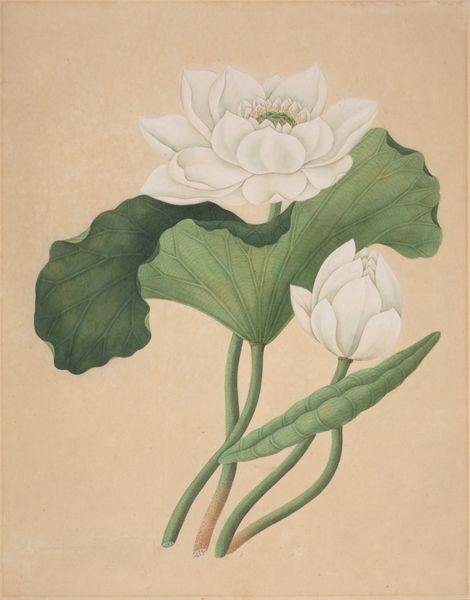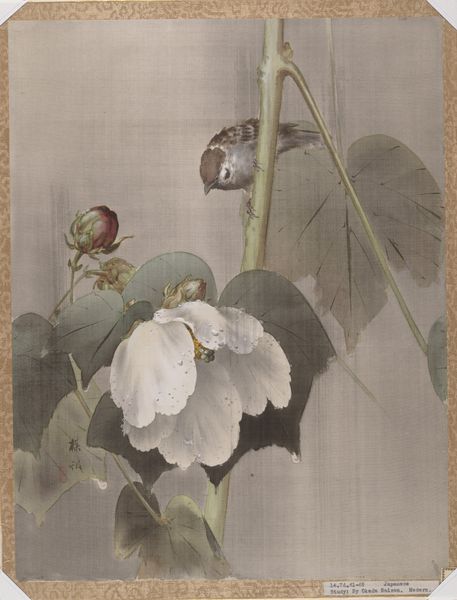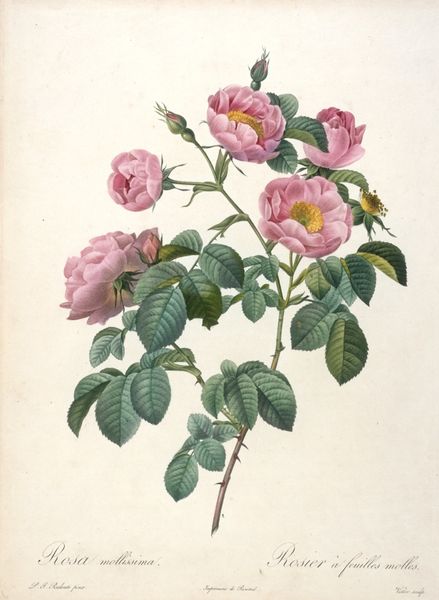
drawing, print
#
drawing
# print
#
oil painting
#
watercolour illustration
#
academic-art
#
botanical art
#
watercolor
#
realism
Copyright: National Gallery of Art: CC0 1.0
Editor: Here we have "Echites splendens" by Samuel Holden, it seems to be a drawing and print, maybe watercolor. It feels very much like the meticulous botanical illustrations you might find in an old encyclopedia. What stands out to you? Curator: The first thing that grabs me is the flower itself: large, trumpet-shaped, and a very specific, pale lavender. Trumpet shapes often symbolize announcements, or a calling to attention. Think of angel Gabriel’s horn. And the delicate lavender shade? That’s about refinement, grace. Look closer—notice the unopened buds cascading down. They speak of potential, of promise. Are they shy, modest even? Editor: So you see a connection between the flower's form and color, and a deeper symbolic meaning? Curator: Absolutely. The unopened buds create this interesting contrast to the main flower in full bloom, maybe a moment in life. The green foliage frames everything. The question becomes: what does that frame signify? What’s being protected, nurtured, or perhaps even obscured? And consider the historical context. Botanical art like this flourished during periods of exploration and colonialism. What hidden meanings or cultural biases might be embedded here? What story is being told and who is telling it? Editor: I hadn’t considered the colonial aspect. It really adds another layer. Thanks, I see much more in this piece now. Curator: Indeed. Images echo through time, carrying echoes of those who created them and the world in which they lived. Keep asking those questions!
Comments
No comments
Be the first to comment and join the conversation on the ultimate creative platform.
